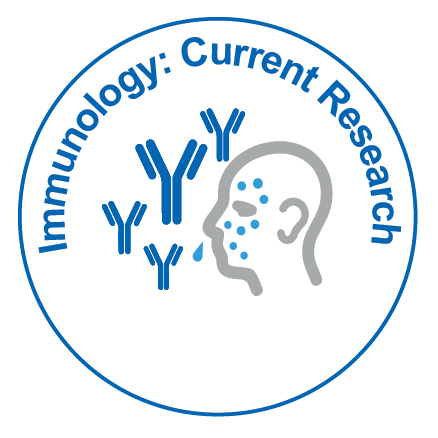Understanding Innate Immunity: How Our Body Fights Infection Instantly
Received: 03-Mar-2025 / Manuscript No. icr-25-166417 / Editor assigned: 05-Mar-2025 / PreQC No. icr-25-166417 (PQ) / Reviewed: 19-Mar-2025 / QC No. icr-25-166417 / Revised: 24-Mar-2025 / Manuscript No. icr-25-166417 (R) / Accepted Date: 30-Mar-2025 / Published Date: 30-Mar-2025
Abstract
Innate immunity represents the body’s immediate and non-specific defense mechanism against invading pathogens. Unlike adaptive immunity, which develops over time, innate immunity provides rapid protection through a variety of cellular and molecular components such as physical barriers, phagocytic cells, natural killer cells, and soluble factors like cytokines. This article explores the fundamental mechanisms of innate immunity, including pathogen recognition through pattern recognition receptors, activation of inflammatory pathways, and the elimination of infectious agents. Understanding the critical role of innate immunity not only reveals how the body fights infections instantly but also highlights its importance in shaping adaptive immune responses and maintaining overall health.
Keywords
Innate immunity; Immune system; First line of defense; Pathogen recognition; Inflammation; Phagocytosis; Natural killer cells; Cytokines
Introduction
Our body is constantly exposed to a wide variety of harmful microorganisms such as bacteria, viruses, fungi, and parasites. To survive and stay healthy, it relies on a sophisticated immune system designed to recognize and eliminate these threats quickly and effectively [1]. The first and fastest layer of this defense is called innate immunity, a built-in, non-specific response that activates immediately upon encountering pathogens. Unlike adaptive immunity, which takes days to develop and targets specific invaders, innate immunity acts as the body’s rapid response team, providing crucial protection in the earliest stages of infection [2]. This article delves into the essential components and mechanisms of innate immunity, explaining how it serves as the body’s frontline defense and lays the groundwork for a successful immune response.
Results
Physical and chemical barriers: The skin and mucous membranes act as the first physical barrier, preventing pathogen entry. Secretions such as mucus, sweat, and stomach acid provide chemical protection by neutralizing microbes. Cellular defenders, including macrophages, neutrophils, dendritic cells, and natural killer (NK) cells, quickly recognize and destroy invading pathogens through processes like phagocytosis and cytotoxicity [3]-[5]. Pattern Recognition Receptors (PRRs): These receptors, such as Toll-like receptors (TLRs), identify common molecular patterns found on pathogens (PAMPs), triggering signaling cascades that activate immune responses.
Inflammatory response: Activation of innate immunity leads to inflammation, characterized by increased blood flow and recruitment of immune cells to infection sites, which helps contain and eliminate pathogens. Innate immune cells release cytokines that coordinate the immune response, promote inflammation, and help activate adaptive immunity [6].
Discussion
Innate immunity plays a pivotal role in maintaining the body's health by providing an immediate defense against pathogens. Key components such as physical barriers (skin and mucous membranes), cellular defenders (like macrophages, neutrophils, and natural killer cells), and molecular signals (cytokines and complement proteins) work together to recognize and respond to foreign invaders swiftly [7]. Pattern recognition receptors (PRRs) on innate immune cells detect common microbial structures, triggering inflammatory responses that recruit additional immune cells to the site of infection. One of the strengths of innate immunity is its speed and broad reactivity, which helps to control infections before they can establish and spread [8],[9]. However, its non-specific nature means it cannot target pathogens with the precision of adaptive immunity. Nevertheless, innate immunity also plays an essential role in activating and shaping adaptive immune responses, effectively bridging the two arms of the immune system [10]. Understanding innate immunity provides valuable insights into how the body controls infections and inflammation, and it has significant implications for developing therapies and vaccines. For example, modulating innate immune responses can improve treatments for infectious diseases, autoimmune disorders, and even cancer.
Conclusion
Innate immunity is the body’s crucial first line of defense, offering rapid and broad protection against a wide range of pathogens. Through an intricate network of barriers, cells, and signaling molecules, it detects and neutralizes threats quickly, preventing infections from taking hold. Beyond immediate protection, innate immunity also primes the adaptive immune system to mount a more targeted and long-lasting response. Advancing our understanding of innate immunity not only deepens our knowledge of human biology but also opens doors to innovative medical approaches that enhance immune protection and overall health.
Acknowledgement
None
Conflict of Interest
None
Citation: Catania G (2025) Understanding Innate Immunity: How Our Body FightsInfection Instantly. Immunol Curr Res, 9: 247.
Copyright: © 2025 Catania G. This is an open-access article distributed underthe terms of the Creative Commons Attribution License, which permits unrestricteduse, distribution, and reproduction in any medium, provided the original author andsource are credited.
Select your language of interest to view the total content in your interested language
Share This Article
Recommended Journals
Open Access Journals
Article Usage
- Total views: 342
- [From(publication date): 0-0 - Dec 08, 2025]
- Breakdown by view type
- HTML page views: 262
- PDF downloads: 80
